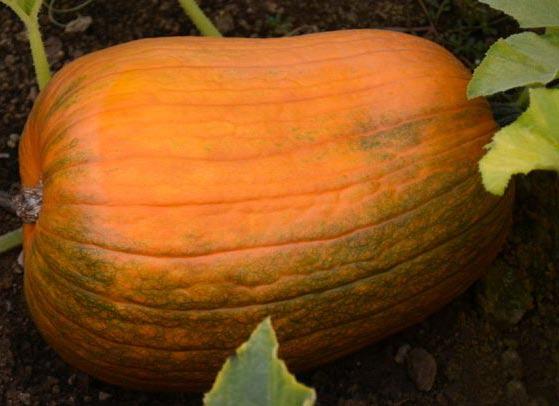EDIBLEharvt
Pumpkin: The Fruit that Nourished A Nation By Barbara Melera
For millennia, members of the pumpkin family have nourished, protected, and been key to the survival of indigenous Americans, colonial Americans, and immigrant Americans. The development of the pumpkin as a major food source was probably thanks to the indigenous peoples of North and South America. All squash, gourds, and pumpkins originally possessed tasteless or bitter flesh, which was essentially inedible. As the native peoples cultivated these fruit for utensils, they began to note that some of the flesh of these fruits became tastier and, with cultivation over decades, the flesh of some pumpkins became very sweet. Pumpkin, because it stores so well, was often the major vegetative food source. It is probably safe to say that no single vegetative food source was more critical to the growth of the American peoples than squash and pumpkins. American gardeners, in general, plant pumpkins, squash, and cucumbers way too early and most of these gardeners start with seedlings rather than seeds. Pumpkins, squash, melons, and cucumbers should always be direct-seeded in early summer into soil whose temperatures have risen to at least 70 degrees. Throughout the United States, there are three problems that, generally, plague pumpkin, squash, melon, and cucumber plants: production of male flowers, squash borer, and wilt. For all 16 WASHINGTON GARDENER OCTOBER 2023
of these, the easiest way to mitigate the problem is by planting much later than you normally would plant and from seed not seedlings. Pumpkins are monoecious plants, meaning each plant produces male and female blossoms. Usually the male blossoms, which have much-needed pollen, are produced first and the female blossoms come later. The female blossoms must have male blossoms in full bloom to produce fruit. Male blossoms are very sensitive to temperature. Pumpkin plants will either not produce or produce very few male blossoms if the temperatures are below 65 degrees. The blossoms are particularly sensitive to nighttime temperatures. When it is cold, the plants produce female blossoms first, but without the pollen from the male flowers, no fruit is produced. The remedy is to plant much later (at least 14–21 days) and plant from seed.
Disease and Other Issues
There are two kinds of wilt that primarily damage or destroy squash, pumpkin, cucumber, or melon plants: squash wilt and powdery mildew. Squash wilt is a bacterium that is carried by the ubiquitous cucumber beetle, an insect that attacks all vining plants. The bacterium is carried in the digestive system of the beetle and transmitted to the pumpkin plant when the beetle deposits its excrement on the plant’s
leaves. The cucumber beetle becomes active throughout the U.S. in mid- to late May and early June, and dies out in several weeks. The remedy is to plant squash, pumpkins, cucumber, and melon from seeds, much later, after the cucumber beetle has died out. Powdery mildew is a fungus that grows best in warm, moist conditions. The spores germinate in cool, moist soil and proliferate with heat and humidity. The remedy is to plant squash, pumpkins, cucumbers, and melon from seed in mid- to late June when the soil has dried out, which discourages spore germination. In the dry heat of late summer, the fungus is less likely to proliferate. Make sure there is good air circulation between the vines. Pumpkin gardeners east of the Rocky Mountains are plagued by squash borers. To minimize the damage from squash borers, plant your pumpkins at the end of June. Squash borers are native to the U.S., east of the Rocky Mountains. The borer is the larval stage of the Clearwing Moth, a wasp-like insect with coppergreen forewings and an orange and black abdomen. The borer winters over in a cocoon located 1 to 2 inches below the surface of the soil. The Clearwing Moth hatches out of its cocoon when the squash vine begins to vine and lays single, oval, brown eggs on the stems and leaf stalks of the vine. The borers hatch in about a week and tunnel into the vine to eat. After feeding for 4 to 6 weeks, the borer returns to the soil, where it builds a cocoon and rests for the winter. The remedy is planting your squash in late June or early July, after the borers have finished eating and are buried in the soil. This will eliminate or reduce the problem. One curious fact about the squash borer is that the Clearwing Moth does not like radish, so planting radishes among your squash will deter the Clearwing Moth. The bottom line on the problems with squash and pumpkins is plant from seed and, for most of the U.S. plant 14–21 days later than you have been planting.








